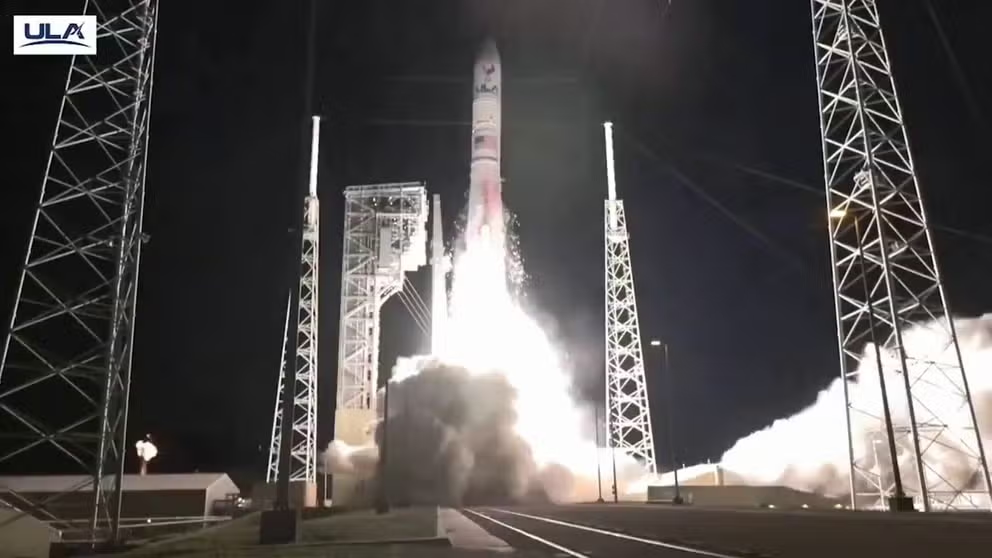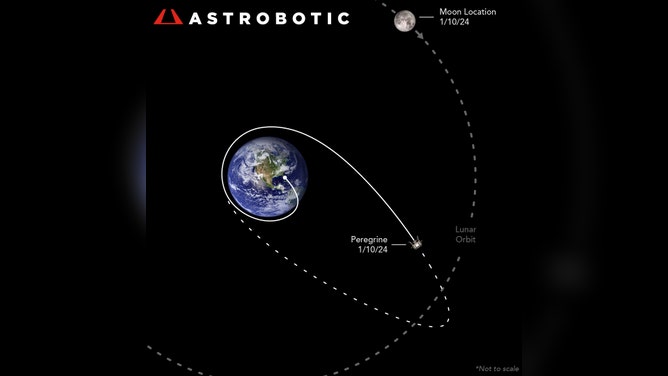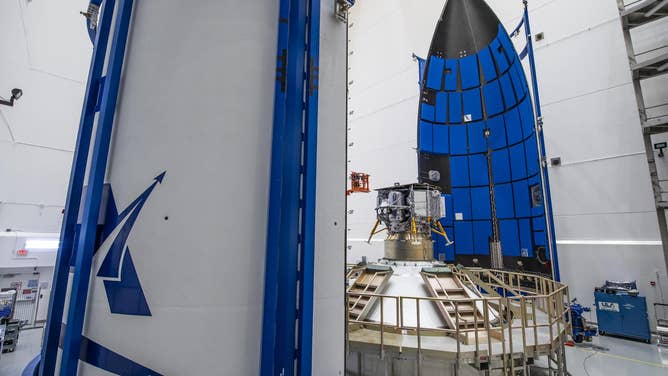Peregrine Moon lander to burn up in Earth’s atmosphere ending Astrobotic’s first mission
Astrobotic’s first robotic Moon mission was foiled by a propulsion system failure soon after launching from Florida on Jan. 8. After more than a week of attempting to salvage the mission, the private company said it will opt to let the Peregrine spacecraft burn up in Earth’s atmosphere to avoid creating debris around the Moon.
Inaugural launch of ULA's Vulcan rocket
ULA's Vulcan rocket launches for the first time carrying the Peregrine Moon lander to space. The liftoff happened from Cape Canaveral, Florida on Jan. 8. (video: ULA)
Astrobotic's Peregrine Moon lander mission will have a fiery finale, burning up in Earth’s atmosphere after the first American Moon landing attempt in decades was thwarted by mechanical issues early in the spaceflight.
The lunar lander launched on ULA’s Vulcan rocket on Jan. 8 beginning the journey to the lunar surface carrying five NASA science instruments and more than a dozen other payloads. Peregrine Mission One was the first mission part of NASA’s Commercial Lunar Payload Services (CLPS) program and, if successful, was slated to be the first American commercial landing.
However, mission managers realized Peregrine was in trouble early after the spacecraft separated from the Vulcan rocket. A propulsion system failure was causing the spacecraft to leak fuel, meaning Astrobotic would have to abort its lunar landing attempt.
'NO CHANCE OF' MOON LANDING FOR PEREGRINE LANDER AFTER MISSION-CRITICAL SPACEFLIGHT ISSUES
After reaching Moon distance, about 240,000 miles from Earth, the spacecraft continued on its planned orbit, looping around and heading back toward Earth. If the mission had gone as planned, the lander would have made a soft landing in late February near the Moon's south pole on its second elliptical lunar orbit.
"We remain on our nominal trajectory for the mission, which includes a phasing loop around Earth," Astrobtic said last week. "This loop goes out to lunar distance, swings back around the Earth, and then cruises out to meet the Moon."
Too dangerous to leave damaged rocket in Earth's orbit
The company said after working with NASA and receiving input from the U.S. government and the space industry, it has decided to let the spacecraft burn up during re-entry into Earth’s atmosphere to avoid creating debris around the moon.
"Ultimately, we must balance our own desire to extend Peregrine’s life, operate payloads, and learn more about the spacecraft, with the risk that our damaged spacecraft could cause a problem in cislunar space," Astrobotic said, referring to the area between the Earth and the Moon. "As such, we have made the difficult decision to maintain the current spacecraft’s trajectory to re-enter the Earth’s atmosphere. By responsibly ending Peregrine’s mission, we are doing our part to preserve the future of cislunar space for all."
The current timeline puts Peregrine within Earth's atmosphere on Thursday with debris possibly falling into the South Pacific.
The company said the spacecraft continues to operate and remains stable more than a week into its spaceflight. Peregrine has been able to provide power to payloads that require it and send back photos from deep space.
"I am so proud of what our team has accomplished with this mission. It is a great honor to witness firsthand the heroic efforts of our mission control team overcoming enormous challenges to recover and operate the spacecraft after Monday’s propulsion anomaly," Astrobotic CEO John Thornton said in a statement. "I look forward to sharing these, and more remarkable stories, after the mission concludes on January 18. This mission has already taught us so much and has given me great confidence that our next mission to the Moon will achieve a soft landing."
Astrobotic said the working theory is that a faulty valve caused the oxidizer tank to pressurize beyond its limits, causing it to rupture and leading to a failure of the spacecraft propulsion system. The spacecraft team continues investigating how the mission went awry as data is sent to Earth via NASA's Deep Space Network.
NASA leaders have said they know some of the commercial missions under the CLPS program will fail. Just over half of all lunar landing attempts have been successful. Only four countries have successfully landed on the Moon, including the U.S., and no private company has yet to do so.
"Spaceflight is an unforgiving environment, and we commend Astrobotic for its perseverance and making every viable effort to collect data and show its capabilities of Peregrine while in flight. Together, we will use the lessons learned to advance CLPS," said Nicola Fox, associate administrator of the Science Mission Directorate at NASA Headquarters.
Intuitive Machines, another U.S. space company, will attempt a Moon landing as part of NASA's CLPS Initiative in February.






